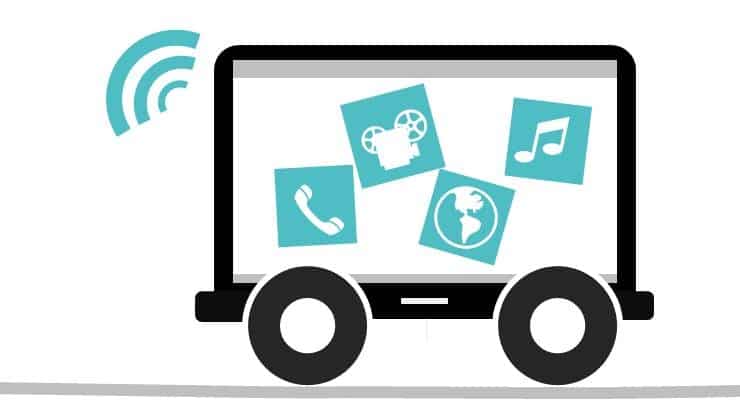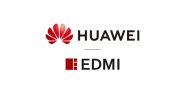Gartner's recent report "Predicts 2015: The Internet of Things" expects that by 2020, one in every five vehicles on the road will have some form of wireless network connection, creating one of the most important segments within the Internet-of-Things(IoT)/M2M space - the connected car. The connected car segment is expected to make up 5.1% (500 million) of all connected things by 2020, which will reach 25 billion units by then, said the research and advisory company.
Broadly speaking, the connected vehicle segment comprises three major service verticals - in-vehicle infotainment, telematics and fleet management. In-vehicle infotainment covers internet and online apps accessed via the car's digital screen; telematics covers connectivity to the automotive systems for vehicle performance and diagnostics; and fleet management refers to remote tracking and monitoring of vehicles. While telematics and fleet management have been witnessing large scale deployments of M2M modules by automakers and providers of fleet management services on the back of the demand for telematics services provided for luxury auto brands and transportation management services provided for transport/logistics companies, the in-vehicle infotainment service is driven by the demand for continuous access to mobile data by car drivers. This demand leads to the need for M2M connectivity in standard passenger cars, and as these passenger cars far outnumber any other class of vehicles, in-vehicle infotainment services will be driving the most rapid growth phase in the connected car market.
Merging together the need for continuous access to data and the fact that M2M modules can now be deployed en-masse on passenger cars, the in-vehicle infotainment has launched itself as a new vertical within the digital content space. Drivers require connectivity to the internet while they are on the road, but the applications and content they access have to be curated and customized to suit in-vehicle consumption including the need for ease of navigation, clarity and simplicity and must include journey relevant applications such as those providing real-time information on the vehicle performance and the traffic conditions.
Infotainment services in the vehicle is delivered via both wireless connectivity (3G and 4G LTE) as well as via tethering with other connected devices such as smartphones. Direct wireless connectivity in the car sees mobile operators providing the SIM for the car's M2M module to enable drivers to access the automaker's connected car platform, typically cloud-based, for the selection of infotainment services provided by the automaker. Automaker's connected car platforms then work with third party online connected car 'stores' such as Airbiquity that host a wide range of in-vehicle applications such as Parkopedia, Stitcher, WCities, Glympse, which automakers can mix and match according to the needs of their platforms. The vehicle's M2M cellular powered wireless module is also integrated with the vehicle's telematics, and using the same SIM, transmits information to the automaker's telematics platform, enabling the automaker to keep tab of the vehicles' diagnostics, performance and location. In this model, a Mobile Operators' connected car service comprises of only the wireless connection.
At the same time, the second means of 'connecting' the car - tethering, sees makers of smartphones collaborating with automakers to enable drivers to plug-in their smartphones in the car and project the phones' UI onto their cars' digital screens. Android Auto by Google, CarPlay by Apple and Windows in the Car by Microsoft are examples of proprietary solutions that enable phones running on their OSs to transfer the entire smart phone experience onto the digital screen while activating the control functions across the knobs and buttons in the car to allow the driver to continue using his smartphone safely while driving. Non-proprietary solutions in this space is MirrorLink by the Connected Car Consortium which uses standard Internet technologies (such as Internet Protocol) for compatibility with a wide range of devices. Latest vehicle models, such as the 2016 Chevrolet Volt already boasts more than one of these tethering options, allowing more smartphones to communicate with the car either via Bluetooth, Wi-Fi or USB. The digital content accessed by drivers on the tethering platforms mirror exactly the content available on their smart devices, again limiting Mobile Operator's role in the in-vehicle infotainment content space.
Interestingly, Google is making further inroads into the connected car segment with plans to introduce Android M, its OS for the connected car. When this happens, partner automakers will be developing their in-vehicle infotainment systems based on Android M, enabling users to switch on connectivity on their car's digital systems just as how they turn on their smartphones. For users of Android phones, they will be able to access all the applications on their phones via cloud sharing. However, as far as content choices are concerned, users of Android M will still be confined to Google's line-up of applications.
Amidst these methods of bringing infotainment service into the car, a newer 'integrated' technology that Mobile Operators can leverage and one that provides them a bigger role in the connected car space, is the operator's LTE Multicast Technology based on the Enhanced Multimedia Broadcast Multicast Service (eMBMS). The technology enables Mobile Operators to power a large number of services - from broadcasting of major events, to mass software upgrades on connected machines and devices including M2M devices/equipments and location specific broadcasting services. Bandwidth-light and cost effective, the technology promises the ability to deliver digital content to any mobile device, including the in-vehicle infotainment system. The technology already boasts intelligence that delivers targeted delivery of content based on the customer and his location, which may pave way for Mobile Operators to go beyond connectivity, to owning and delivering in-vehicle digital content and applications for drivers. Verizon, the largest Mobile Operator in the US, debuted the technology earlier this year at the CES.
Although Operators' foray into digital services has picked up in a major way in the last two years with the introduction of services such as mobile TV, OTT video and mobile music as well as Operator apps such as messaging app, within the connected car segment, Operators have yet to develop content packages that can be bundled with their connection plans even though the connected car is offered as part of a shared plan. However, given that by 2020, half a billion of vehicles will become connected, and given that Operators are already investing in content delivery networks, video optimization and other bandwidth optimization technologies for the delivery of a wide range of content, they may be looking at potential tie-ups with content providers and collaboration with auto-makers to develop content offers which are more contextual and more customized and which can bundled with their existing multi-screen content services.




















